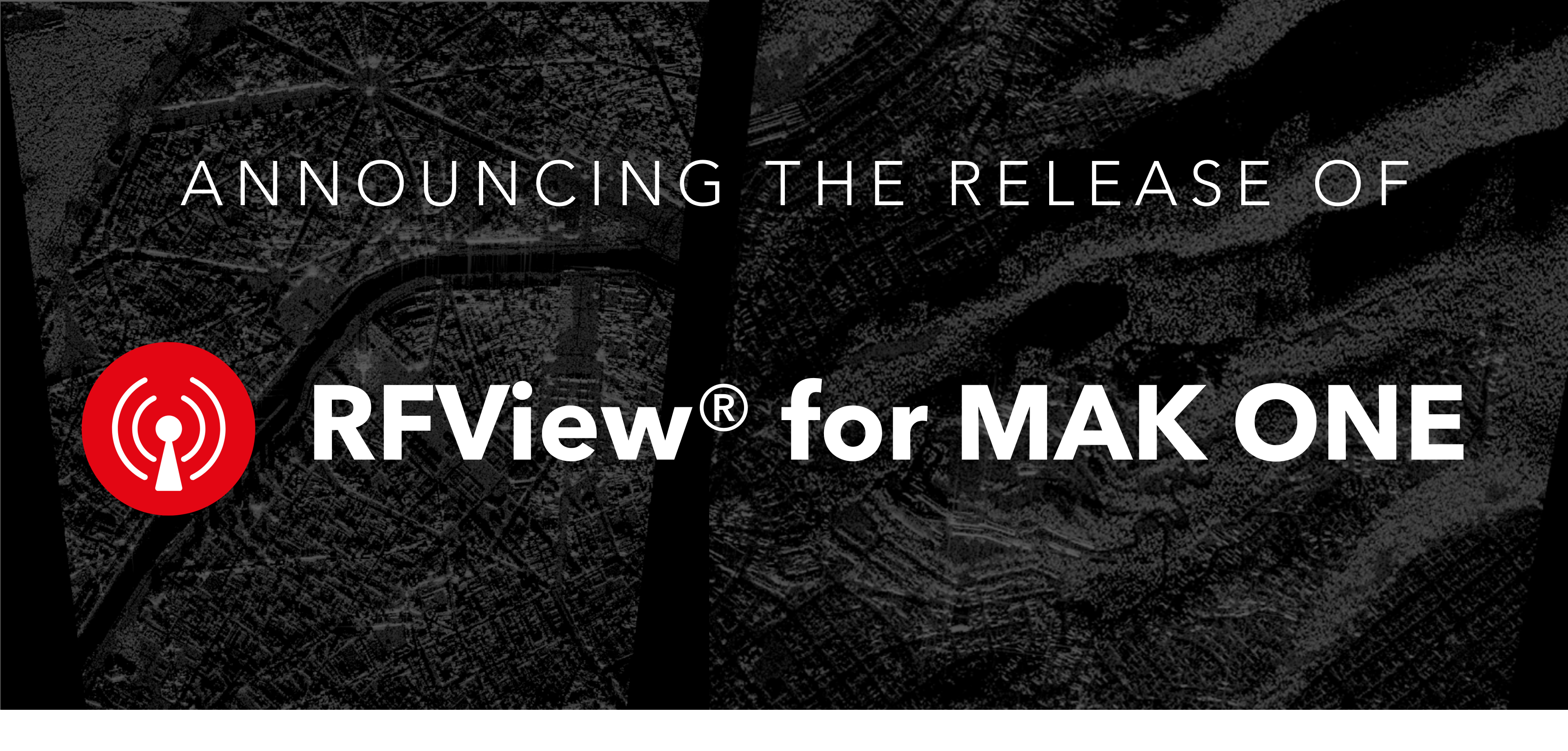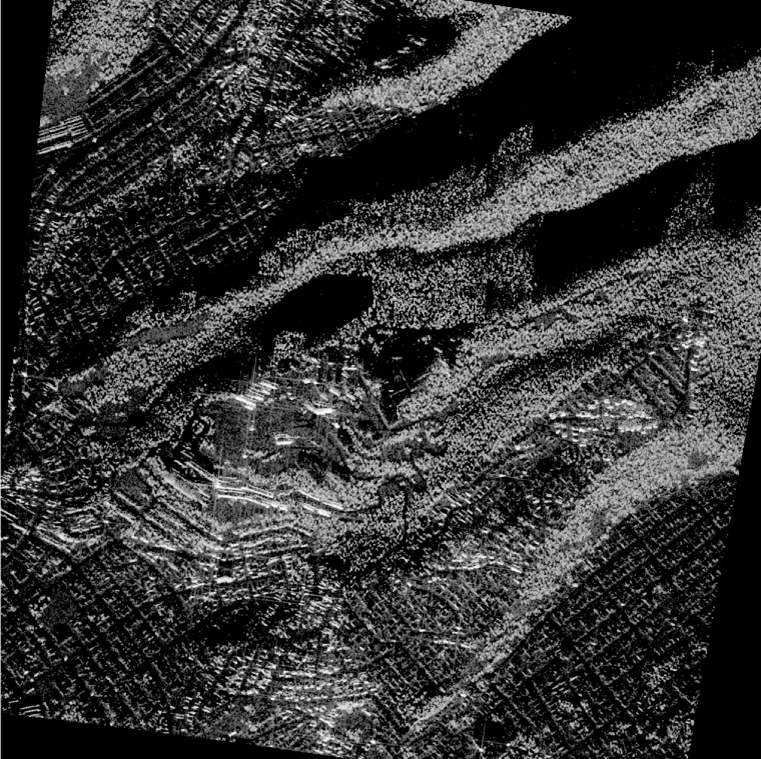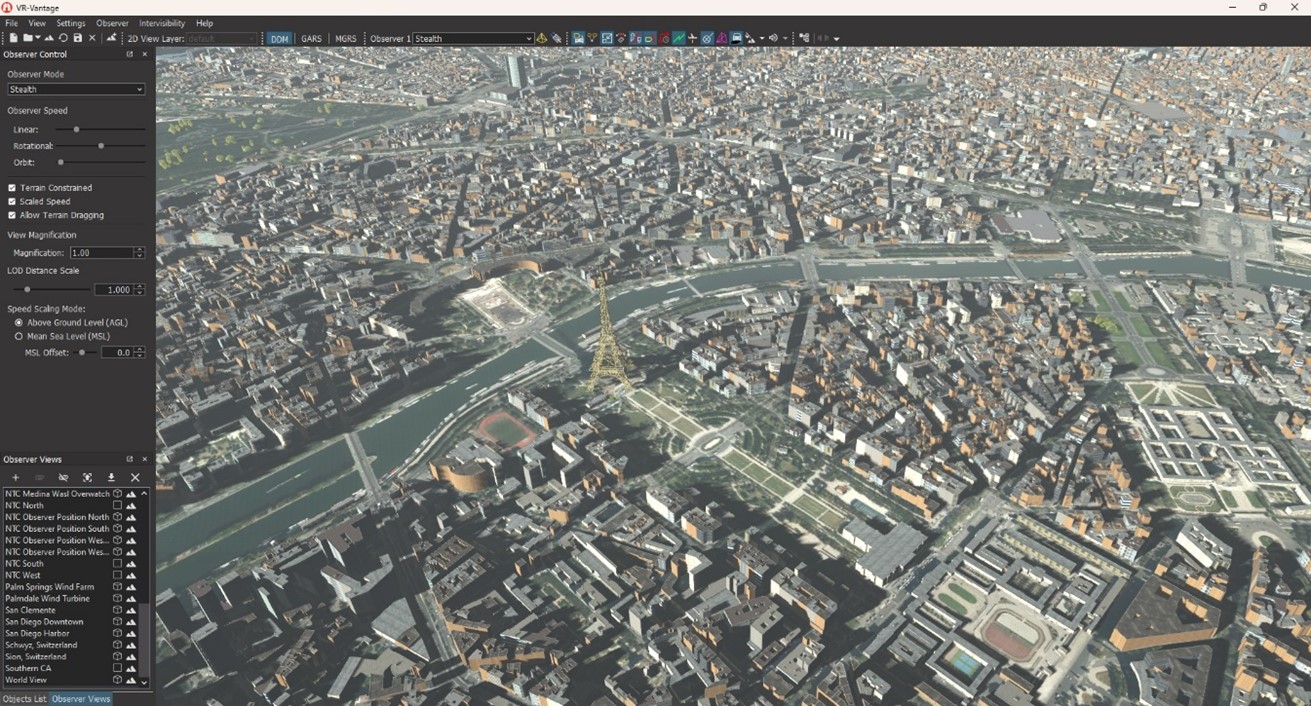
RFView® for MAK ONE is here, bringing next-generation SAR imaging into MAK ONE synthetic environments.
Jointly developed with Information Systems Laboratories (ISL), RFView® for MAK ONE combines ISL’s decades of expertise in radar simulation with MAK’s multi-domain, terrain-agile synthetic environments—delivering fully correlated SAR imagery that integrates seamlessly with EO/IR sensor and out-the-window views.
Serves SAR Imagery on Demand

RFView for MAK ONE generates and delivers simulated SAR images of MAK ONE synthetic environments based on requests from client applications through an API or network interface. It uses real-time GPU-based ray tracing techniques to produce credible physics-based results, with the natural characteristics found in real SAR images.
This includes Gibbs ringing effects, foreshortening and layover of tall objects, SAR shadows, smearing and displacement of moving objects, speckle, jammer/repeater artifacts, and important multi-bounce effects that can’t be achieved with other approaches.
Jointly Developed by MAK and ISL

Our partner, ISL, is an industry leader in radar and radio frequency simulation and analysis for over four decades. This product uses ISL’s RFView® radar simulation technology to generate SAR images based on terrain and entity geometry and material data provided at run-time by a dedicated instance of MAK’s VR-Vantage IG.
This approach allows RFView® to access terrain in any of the formats supported by MAK ONE (including direct-from-source streaming from VR-TheWorld Server, procedural terrain generation, cut-in FBX or OpenFlight insets, CDB databases, and dynamic terrain elements); and to access entity geometry (including articulated parts, embarkation, damage, and DI-Guy posture and animations) —provided by VR-Vantage based on DIS/HLA data received from VR-Forces or other federates.
Shows Correlated Views of the Synthetic Environment

This image is the VR-Vantage out-the-window view of the same Eiffel Tower SAR image from the previous section; these correlated images were generated at different altitudes by RFView for MAK ONE.
Key Features
The launch of RFView for MAK ONE release introduces a powerful set of features designed to deepen realism and accuracy in SAR simulation by more closely representing how signals behave in real-world environments. These features include:
- Layover & Shadowing
- Relative Velocity Doppler Shift
- Receiver Noise
- Waveform Effects & Speckle
- Windblown Doppler Shift
- Antenna Patterns, Beamforming, Multichannel Support
- Phase History, Motion Effects, Range Walk
- RTX Path Tracing Multibounce & Flashing
Ready to get started? Join the Early Adopter Program and get 10% off RFView for MAK ONE before June 25! Reach out to
Questions or comments? Connect with the MAK team anytime at

